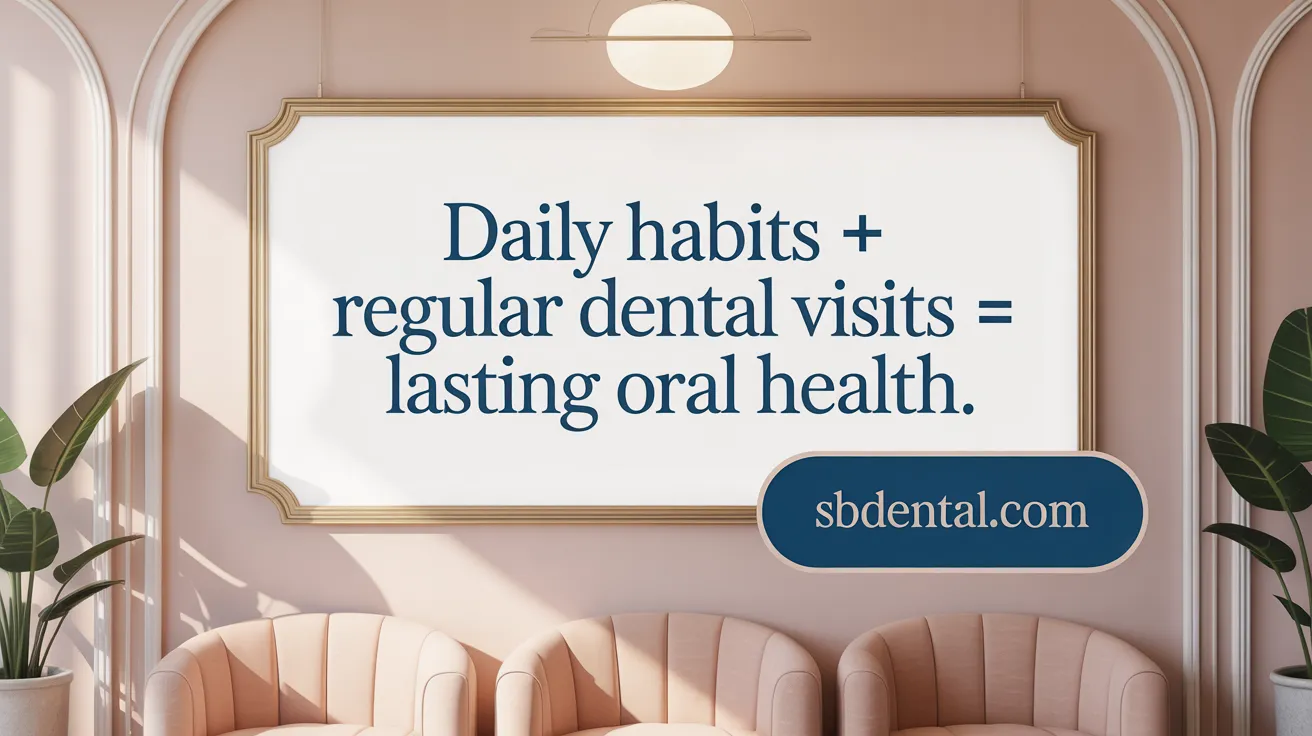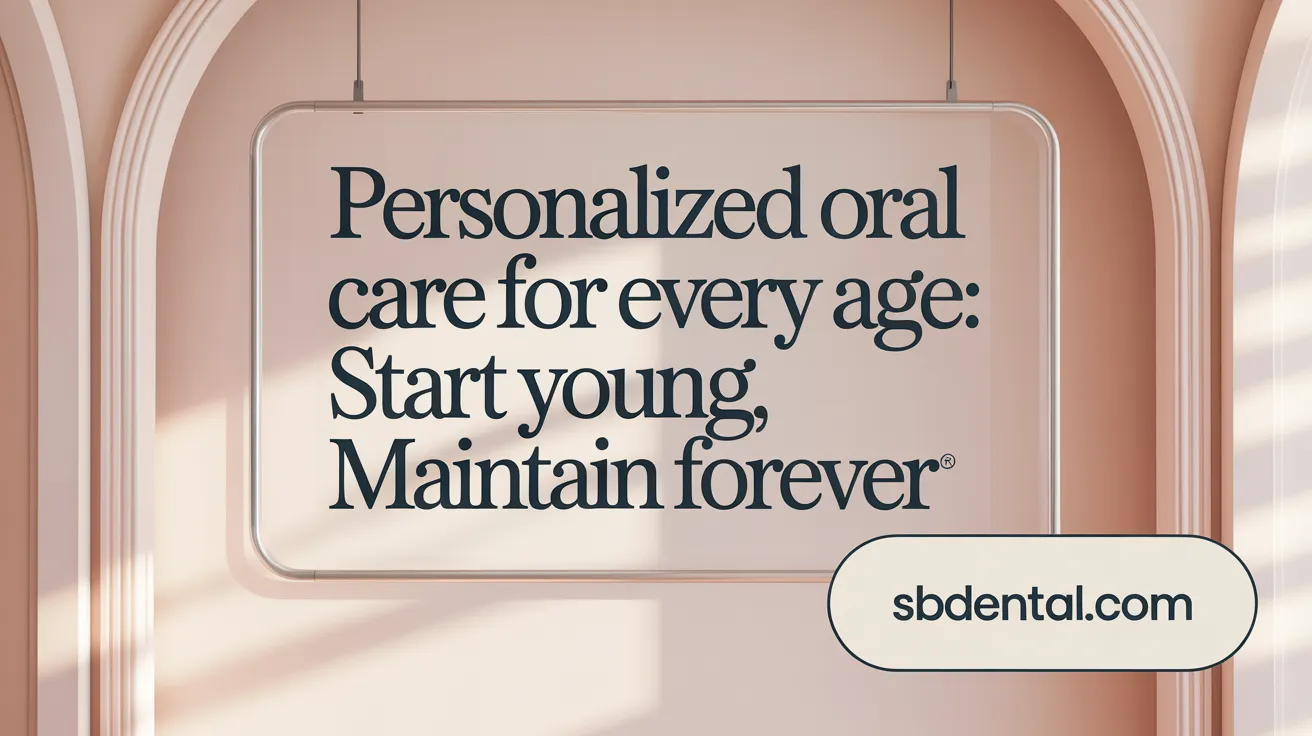Why Preventive Dental Care Matters at Every Age
Preventive dental care is a cornerstone of maintaining lifelong oral health and overall well-being. From infancy through older adulthood, adopting proper oral hygiene habits and regular professional care can prevent common dental diseases, reduce systemic health risks, and improve quality of life. This article explores essential preventive practices, age-specific guidelines, and community efforts to promote healthy smiles at every stage of life.
The Vital Role of Preventive Dental Care for All Age Groups
Preventive dental care plays a crucial role in maintaining oral health throughout every stage of life. It involves regular dental check-ups, professional cleanings, fluoride treatments, dental sealants, and good daily oral hygiene habits such as brushing and flossing. For children, early interventions like fluoride varnish applications and sealants protect developing teeth from cavities and establish lifelong habits of good oral hygiene. These preventive measures are vital for reducing the risk of early childhood caries, which is one of the most common chronic diseases among kids (Preventing cavities in children).
As individuals grow into adulthood, preventive care continues to be essential. It helps prevent issues such as gum disease, root caries, and erosion caused by acidic foods and drinks (oral health tips for adults). For seniors, preventive strategies address age-related concerns such as dry mouth, receding gums, and maintaining the function of natural teeth or dental prosthetics (Oral Health Tips for Older Adults). Routine dental visits allow for early detection of problems like oral cancer, infections, and other developing conditions.
The impact of preventive dental care extends beyond oral health. It significantly influences overall health by lowering the risk of systemic diseases. Conditions such as heart disease, stroke, diabetes, and complications during pregnancy have been linked to poor oral health (Oral health and systemic health). By preventing severe dental problems, preventive care reduces the need for invasive and costly treatments, leading to lower healthcare expenses.
Furthermore, implementing preventive strategies helps to diminish health disparities across different populations. Access to preventive services like water fluoridation, community sealant programs, and affordable dental care can bridge gaps in oral health outcomes among low-income and underserved communities (Oral health equity).
In summary, universal adoption of preventive dental care at all ages promotes healthier teeth and gums, supports systemic health, reduces economic burdens, and fosters health equality. Building habits and access to regular care from childhood through older age ensures a better quality of life and community well-being.
Best Practices for Maintaining Oral Hygiene at Every Life Stage

What are the best practices for maintaining oral hygiene at different ages?
Maintaining good oral hygiene practices varies across life stages, with tailored strategies to ensure lifelong dental health. For infants, the focus starts early with gentle wiping of gums with a soft, damp cloth before teeth erupt. When the first tooth appears, parents should begin brushing with a tiny smear of fluoride toothpaste, supervised until about age 6. Regular dental visits should commence by a child's first birthday, promoting early detection of potential issues and establishing a dental home.
As children grow, brushing skills are reinforced with supervision, and flossing is introduced once two teeth touch. Dental sealants and fluoride treatments help prevent cavities, especially in hard-to-clean molar surfaces. Limiting sugary foods and drinks and encouraging nutritious diets support oral health.
Adults should maintain these habits consistently, choosing fluoride toothpaste, flossing daily, and replacing toothbrushes every three to four months. Regular dental check-ups , usually every six months, aid in early problem detection and prevention.
In older adults, additional considerations include managing dry mouth caused by medications or health conditions, caring for dentures or implants, and screening for oral cancers. Good hygiene practices—brushing twice daily, flossing, staying hydrated, and avoiding tobacco—remain essential.
Overall, adopting age-appropriate routines that emphasize proper brushing and flossing, maintaining a healthy diet, and regular dental visits help preserve oral health throughout life.
Techniques for brushing and flossing
Proper brushing involves holding a soft-bristled toothbrush at a 45-degree angle toward the gum line. Gentle, short circular strokes clean all surfaces of each tooth, including the front, back, and chewing surfaces. Brushing the tongue helps reduce bacteria that cause bad breath.
Flossing once daily is crucial for cleaning between teeth where a toothbrush can't reach. Wrap about 18 inches of floss around your fingers, gently slide it between teeth in a 'C' shape,' and move it up and down. For those with difficulty, tools like floss holders or water flossers can be effective.
Dietary considerations and lifestyle habits
A balanced diet low in sugary snacks and beverages supports oral health by reducing the bacteria that produce harmful acids. Drinking fluoridated water and using fluoride toothpaste strengthens enamel and helps prevent decay.
Limiting alcohol and tobacco use significantly decreases the risk of gum disease and oral cancer. Wearing protective gear such as mouthguards during sports can prevent dental injuries. Quitting smoking and avoiding oral piercings further improves oral health.
In summary, effective oral hygiene for every age encompasses consistent and proper brushing and flossing techniques, a nutritious diet, avoiding harmful substances, and regular professional dental care. Implementing these practices promotes healthier teeth and gums, reduces disease risk, and supports overall health at every stage of life.
Daily Habits and Professional Care: A Dual Approach to Disease Prevention

How can daily habits and professional care prevent dental diseases?
Maintaining good oral health requires a combination of everyday practices and regular visits to the dentist. Daily habits such as brushing your teeth twice a day with fluoride toothpaste help remove plaque, the sticky film of bacteria that causes cavities, gum disease, and bad breath. Flossing daily clears food particles and plaque from between teeth and under the gumline, areas that toothbrushes can't reach. Using mouthwash can further reduce harmful bacteria, while cleaning your tongue helps eliminate bacteria that cause bad odors.
Proper brushing techniques are vital. Holding the toothbrush at a 45-degree angle toward the gums and using gentle, circular motions ensures effective plaque removal without damaging gums. Replacing your toothbrush every three to four months keeps brushing effective. Limiting sugary foods and drinks supports oral health by reducing substrates for bacteria that produce acids harmful to enamel (Dental disease prevention).
Regular professional dental care complements these habits. Dentists perform routine checkups and professional cleanings, typically every six months, to catch early signs of dental problems. They also apply fluoride treatments and sealants, which strengthen enamel and prevent decay. Early diagnosis and treatment of issues like cavities or gum disease minimize the need for invasive procedures, save costs, and protect overall health (The Importance of Preventive Dental Care for All Ages).
Together, consistent daily skincare and routine dental visits form a powerful, comprehensive approach to preventing dental diseases. This dual strategy not only preserves teeth and gums but also promotes systemic health, reducing risks of heart disease, stroke, and other conditions linked to poor oral hygiene (Oral health and systemic health).
Early Intervention and Establishing Lifelong Oral Health Routines
What are the benefits of early intervention and establishing proper oral health routines?
Starting dental care early offers numerous advantages that set the foundation for lifelong oral health. When children visit the dentist regularly from a young age, it helps in the early detection and prevention of dental problems such as cavities, gum disease, and dental infections. These early visits also promote the development of good habits like proper brushing, flossing, and healthy eating, which are essential in maintaining strong teeth and gums.
Establishing routines such as brushing twice daily with fluoride toothpaste, flossing daily, and using sealants or fluoride treatments can significantly reduce the risk of decay and prevent the need for invasive procedures later in life. Furthermore, early dental experiences help children become comfortable with the dental environment, reducing anxiety and fostering positive attitudes toward oral health.
These preventive measures not only improve oral health but also contribute to overall wellness by reducing pain, infections, and systemic health issues linked to poor oral hygiene. Additionally, early intervention can lower long-term healthcare costs by minimizing the necessity for complex treatments as children grow older.
Overall, fostering good oral health habits from a young age benefits children’s development, boosts self-esteem through healthier smiles, and supports their overall health, making early dental care a vital investment in their future.
Key Preventive Measures: Fluoride, Sealants, and Nutritional Guidance
 Preventive strategies are central to maintaining strong, healthy teeth and avoiding dental diseases like cavities and decay. Among these, the use of fluoride treatments and dental sealants are particularly effective.
Preventive strategies are central to maintaining strong, healthy teeth and avoiding dental diseases like cavities and decay. Among these, the use of fluoride treatments and dental sealants are particularly effective.
Fluoride plays an essential role in oral health by strengthening tooth enamel. It promotes remineralization, making teeth more resistant to the acids produced by bacteria that cause cavities. Fluoride can be found in various sources such as fluoridated water, toothpaste, mouth rinses, and professional treatments like gels and varnishes applied during dental visits.
Dental sealants are a modern preventive technique specifically designed to shield the back teeth—the molars and premolars—where decay frequently occurs. These thin, plastic coatings are painted onto the chewing surfaces of durable teeth, filling deep grooves and pits that are hard to clean with a toothbrush alone. Once sealed, these areas become less susceptible to food and bacteria buildup, significantly reducing the risk of developing cavities. Sealants not only act as a physical barrier but can also release fluoride ions that aid in remineralizing enamel.
Application of sealants requires careful preparation, including cleaning the tooth surface and keeping it dry to ensure proper adhesion. Proper application ensures maximum effectiveness and longevity.
In addition to fluoride and sealants, dietary choices greatly impact oral health. Limiting sugary snacks and drinks helps reduce the number of bacteria-friendly substrates in the mouth. Eating a balanced diet rich in fruits, vegetables, dairy, and minerals provides the essential nutrients for healthy teeth and gums.
Routine dental check-ups are necessary to monitor and reinforce these preventive measures. Regular professional cleanings, fluoride treatments, and sealant reapplications when needed help maintain optimal oral health.
Together, these measures form a comprehensive approach, combining chemical, physical, and nutritional factors to prevent dental problems before they develop. Consistent implementation of fluoride use, sealants, and healthy eating habits can lead to fewer dental visits, lower treatment costs, and a healthier smile for life.
Exploring more about these preventive techniques can be done by searching for "fluoride and dental sealants in preventive dentistry", which provides detailed information on their benefits and application.
Tailored Oral Health Tips and Resources for Every Age Group
 Maintaining optimal oral health requires different strategies and resources tailored to each stage of life. For children, early dental care begins with gently wiping their gums before teeth erupt, using a soft cloth or infant toothbrush. Once teeth appear, supervised brushing with fluoride toothpaste and regular dental visits by age one establish good habits and prevent problems like cavities and gum disease. Sealants and fluoride varnish can protect their developing teeth, and a balanced diet low in sugary snacks supports long-term health.
Maintaining optimal oral health requires different strategies and resources tailored to each stage of life. For children, early dental care begins with gently wiping their gums before teeth erupt, using a soft cloth or infant toothbrush. Once teeth appear, supervised brushing with fluoride toothpaste and regular dental visits by age one establish good habits and prevent problems like cavities and gum disease. Sealants and fluoride varnish can protect their developing teeth, and a balanced diet low in sugary snacks supports long-term health.
Teenagers face unique challenges like orthodontic treatment. They should focus on proper brushing and flossing, especially around braces, and avoid harmful habits such as smoking or vaping, which increase risks of oral cancer and gum disease. Regular dental check-ups and cleanings help monitor orthodontic progress and catch issues early.
Adults need consistent daily oral hygiene practices, including brushing twice daily with fluoride toothpaste, flossing, and limiting sugary foods and drinks. Attending routine dental visits at least twice a year allows early detection of cavities, gum disease, and oral cancers. Adults with systemic health issues, such as diabetes, should maintain diligent oral care to prevent complications.
Seniors often encounter age-related dental challenges like dry mouth, receding gums, and mobility issues. Proper denture care, regular dental screenings, and managing dry mouth through hydration are essential. They should also be vigilant for symptoms of oral cancer and coordinate with their dental providers for tailored maintenance plans.
To support these age-specific needs, various tools and aids are recommended. Electric toothbrushes, floss holders, interdental brushes, and mouthrinses like fluoride or antimicrobial rinses can enhance cleaning efficiency, especially for those with limited dexterity. Educational resources tailored to each age group, including brochures, videos, and community programs, empower individuals and caregivers to adopt lifelong healthy habits.
By customizing oral health guidance according to age, risk factors, and lifestyle, we can promote sustained dental wellness across the lifespan, ultimately contributing to overall health and improved quality of life.
Public Health Strategies Enhancing Community Oral Health and Integration with Overall Wellness

How do public health strategies and community prevention efforts improve overall oral health?
Public health strategies and community prevention efforts play a crucial role in elevating oral health outcomes across populations. These initiatives focus on addressing social determinants of health, such as access to nutritious foods, dental care services, and education about oral hygiene practices. Community programs like water fluoridation, school-based sealant programs, and public awareness campaigns help reduce disparities and prevent common dental diseases such as cavities and gum infections.
Supporting policies that ensure affordable access to preventive services, including fluoride varnish applications and routine screenings, lead to decreased treatment costs and fewer emergency dental visits. Increasing the number of dental providers in underserved areas and promoting preventive treatments help bridge gaps in healthcare delivery.
Through collaborations involving government agencies, schools, and community organizations, these efforts empower individuals with knowledge and resources to maintain healthier smiles. By focusing on prevention rather than treatment, these strategies promote sustainable improvements in community oral health and overall well-being. For more details on preventive dental care and its benefits, see Preventive Dentistry.
What is the connection between oral health and overall health, especially in disease prevention?
The link between oral health and systemic health is well-established and multifaceted. Poor oral hygiene and periodontal disease are associated with higher risks of cardiovascular disease, stroke, diabetes complications, pneumonia, and even neurodegenerative conditions such as Alzheimer’s disease. This connection primarily occurs through systemic inflammation, bacteria entering the bloodstream from inflamed gums, and immune response alterations.
Conversely, chronic conditions like diabetes and heart disease can impair oral health by increasing susceptibility to infections and delaying healing. This bidirectional relationship highlights the importance of maintaining good oral hygiene as part of overall health management.
Regular dental visits for early detection of oral conditions, along with controlling risk factors such as tobacco use and poor nutrition, significantly help prevent or manage systemic diseases. An integrated approach that involves both dental and medical professionals ensures comprehensive care, ultimately reducing the overall healthcare burden and improving individual health outcomes. For more information on oral health and its impact on systemic health, visit Oral Health Tips for Adults and Oral Health and Overall Health.
The Lifelong Commitment to Preventive Dental Care
Preventive dental care is essential at every stage of life, offering substantial benefits that go beyond oral health to influence overall wellness and quality of life. By adopting age-appropriate hygiene practices, utilizing proven preventive measures like fluoride and sealants, and embracing regular professional dental care, individuals can effectively prevent dental diseases and reduce healthcare costs. Public health strategies and educational initiatives play a pivotal role in extending these benefits to broader communities, particularly for vulnerable populations. Ultimately, fostering a culture of prevention empowers people of all ages to maintain healthy smiles, supports systemic health, and enhances both individual and societal well-being throughout the lifespan.
